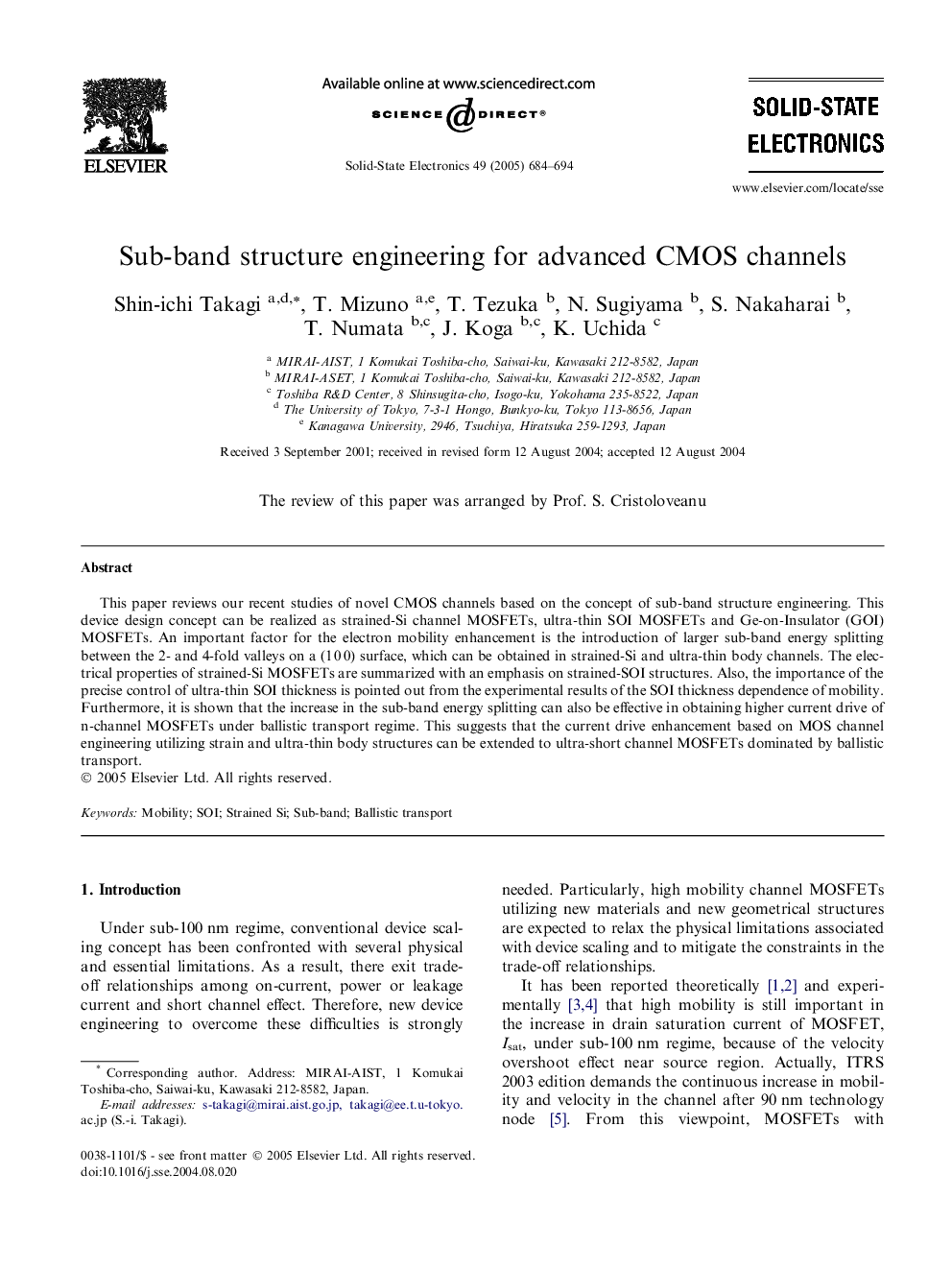| Article ID | Journal | Published Year | Pages | File Type |
|---|---|---|---|---|
| 10411164 | Solid-State Electronics | 2005 | 11 Pages |
Abstract
This paper reviews our recent studies of novel CMOS channels based on the concept of sub-band structure engineering. This device design concept can be realized as strained-Si channel MOSFETs, ultra-thin SOI MOSFETs and Ge-on-Insulator (GOI) MOSFETs. An important factor for the electron mobility enhancement is the introduction of larger sub-band energy splitting between the 2- and 4-fold valleys on a (1Â 0Â 0) surface, which can be obtained in strained-Si and ultra-thin body channels. The electrical properties of strained-Si MOSFETs are summarized with an emphasis on strained-SOI structures. Also, the importance of the precise control of ultra-thin SOI thickness is pointed out from the experimental results of the SOI thickness dependence of mobility. Furthermore, it is shown that the increase in the sub-band energy splitting can also be effective in obtaining higher current drive of n-channel MOSFETs under ballistic transport regime. This suggests that the current drive enhancement based on MOS channel engineering utilizing strain and ultra-thin body structures can be extended to ultra-short channel MOSFETs dominated by ballistic transport.
Related Topics
Physical Sciences and Engineering
Engineering
Electrical and Electronic Engineering
Authors
Shin-ichi Takagi, T. Mizuno, T. Tezuka, N. Sugiyama, S. Nakaharai, T. Numata, J. Koga, K. Uchida,
